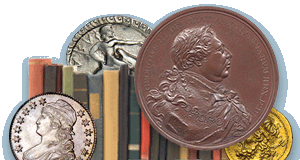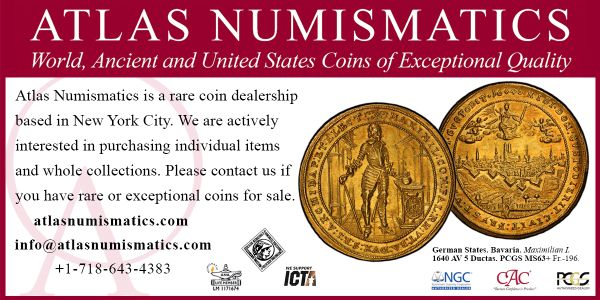
PREV ARTICLE
NEXT ARTICLE
FULL ISSUE
PREV FULL ISSUE
THE COINAGE OF AKRAGASMike Markowitz wrote an article in CoinWeek on the coinage of Akragas. An excerpt is found below. -Garrett Akragas (Agrigentum in Latin, now Agrigento, Italy) was founded around 582 BCE by Greek colonists from the nearby city of Gela on the south coast of Sicily. Located between two small rivers and blessed with fertile soil in the surrounding area, it grew to be the second-largest city of Sicily, exceeded only by the great port of Syracuse. Akragas issued some of the most beautiful and admired ancient coins ever struck. The well-preserved "Valley of Temples" at Akragas is a World Heritage Site and a popular tourist attraction today. Akragas began issuing its silver coinage about 510 BCE (possibly as early as 520). Weighing about 8.5 grams, the coins are described as didrachms or two-drachma pieces. The obverse bears a standing eagle, surrounded by the city name in Greek letters, either spelled out in full (AKRAG- ANTOS ) or abbreviated (AK – RA). The reverse shows a crab, which became the city's distinctive badge. The creature is depicted in such detail that the species can be identified: Potamon fluviatile, a small, edible freshwater crab native to southern Europe. The eagle and crab didrachms were issued for about forty years. Worn examples can be found for as little as $200, while exceptional pieces have sold for as much as $6,700 in recent auctions. As the city prospered, there was a need for a higher-value coin, and a silver tetradrachm on the "Attic" standard of Athens (17.2 grams) was introduced about 470 BCE. The design is almost the same as the didrachm, but the eagle now stands on a dotted ground line, and sometimes a small symbol, such as a lotus flower, appears below the crab on the reverse. Examples typically sell for about $1,500 at the low end, and as much as $30,000 at the high end of the market. There was also a need for fractional denominations for small daily purchases. Beginning around 465 BCE, a little silver hemidrachm of about 2 grams was struck with the usual standing eagle and crab design. About 420 BCE, the design was changed to a dramatic image of an eagle clutching a hare in its talons. These were issued in large quantities, and well-worn examples can be found for under $100. On some pieces, a sea monster or fish appears below the crab on the reverse.
To read the complete item description, see:
Wayne Homren, Editor The Numismatic Bibliomania Society is a non-profit organization promoting numismatic literature. See our web site at coinbooks.org. To submit items for publication in The E-Sylum, write to the Editor at this address: whomren@gmail.com To subscribe go to: Subscribe All Rights Reserved. NBS Home Page Contact the NBS webmaster 
|



